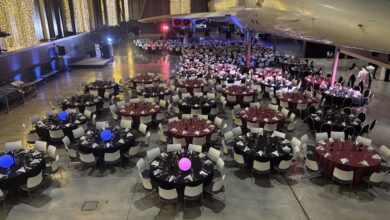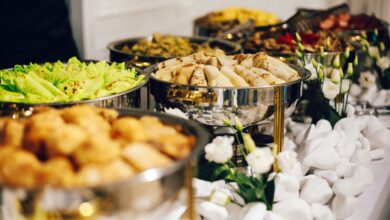The demand of non-alcoholic beer and how it’s set to change in 2018

Register to get 1 free article
Reveal the article below by registering for our email newsletter.
Want unlimited access? View Plans
Already have an account? Sign in
We are entering an age of moderation. Last year, Britain knocked back a record 18.2 million litres of non-alcoholic beer, while the extra strong beer industry lost £8.9m. The stigma that it’s just for pregnant women, those taking antibiotics and distant relatives at Christmas who need to drive home, is being slowly but surely eradicated. Non-alcoholic beer is better for you than fizzy drinks and it’s certainly better than a driving ban. With the consumer’s changing attitudes towards health awareness the demand for non-alcoholic beer is blossoming. It seems that the consumer no longer sees it as they see decaf coffee, fat free cheese or sugar-free cake. Last year, the sales of non-alcoholic beer grew by a whopping £5.9m, hitting £34.7m. In Scotland, Wales and England, 10.6 million adults didn’t consume any alcohol in 2016 and a fifth now claim to be teetotal. All this is contributing greatly to the booming non-alcoholic beer market. Might the consumer be purchasing it because they actually enjoy it and not because they have too? The general consensus is that they need to work on the taste before that happens…
The history and science of non-alcoholic beer
Non-alcoholic beer, which is also referred to as ‘light’ or ‘low’, is regular beer that is boiled before it is bottled to take away its alcohol content. Non-alcoholic beer first arrived on the scene when America’s prohibition began in 1920, setting the limit of alcohol to 0.5%. This alcohol ban lasted for 13 years, during which time the USA started to rather like non-alcoholic beer. When the ban was lifted in 1933, the breweries carried on making these beverages but just took a little less alcohol out. This is a possible explanation for why light beers like Bud, Coors and Pabst are so loved by Americans.
Non-alcoholic beer starts as regular beer, checking off every stage of the normal process. Normal beer is bottled once it is fermented, but at this point, non-alcoholic beer has to have the alcohol removed. There are three main ways in which this is done – heating, vacuum distillation and reverse osmosis, which is the most tricky but best method because it doesn’t cause a loss of flavour. Removing the alcohol from beer will make it go flat, so before bottling, it’s simply pumped with CO2, essentially creating a beer flavoured fizzy drink. There are however, a few issues with the process – there are next to no good non-alcoholic IPAs on the market, because the flavour of hops almost completely disappear within 15 minutes of heating. Another is that non-alcoholic beers often taste metallic, which is due to the fact that alcohol covers up the taste of carbon dioxide in normal beer, so it’s the CO2 that tastes a bit odd.
Booming sales
We are seeing a general global decrease of alcohol consumption, with the exception of a few Eastern European countries like Moldova and Russia, who are very much on the wagon. In the west, teenagers and young adults are glued to screens and addicted to technology, reducing the number of park cider drinkers and heavy weekend boozers. The consumer has become more knowledgeable of the negative effects of alcohol, thanks to the relentless health campaigns of western governments. In 2012, the world consumed 2.2 billion litres of non-alcoholic beer, and even Japan, who are traditionally rather fond of a drink have soaring non-alcoholic beer sales. So why is this happening? Does the advancement in brewery technology mean that it tastes better than it has in the past? In Middle Eastern countries like the United Arab Emirates and Saudi Arabia, which make up for a third of global sales, alcohol is either partially or completely prohibited, creating a huge demand for an ice cold bottle of non-alcoholic beer in the dry heat. In 2012, Iranians were reported to have drunk almost four times as much of it as they did five years earlier.
Social changes in many Asia Pacific countries are rumoured to also have had an effect on the popularity of non-alcoholic beer. In India, Japan, China and Australia, we are seeing a huge increase in urbanisation and a newly emerging middle class, as well as an increase in average income, which supports the market growth of non-alcoholic beer. In 2016, a staggering 26% of newcomers in the Chinese beer market were non-alcoholic.
One of the world’s largest brewers, InBev, are leading the trend as they aim for making a fifth of their sales from non-alcoholic beer by 2025 and the sales of BrewDog’s famous non-alcoholic Nanny State went from £1.3m to £2m last year. It is estimated that the non-alcoholic beer industry in Europe will top $25bn by 2024, so will this rapid global growth pose a threat to regular beer and soft drinks?
Non-alcoholic beers to silence the sceptics…
Clausthaler Golden Amber – German, full bodied and tastes like a normal beer
Kaliber – a rich, sweet and nutty beverage made by Guinness
Buckler – made by Heineken and for a non-alcoholic beer it has a lot of complexity
O’Douls Amber – one of Budweisers rich and sweet non-alcoholic offerings
The wonderful thing about non-alcoholic beer is that here in the UK today, we see it as a sophisticated choice to make in the pub, in keeping with the rising popularity of moderation and self restraint. Drinking a light beer no longer damages the social image of the drinker, or the brand for that matter. In Britain, beer is an accessory to being social and now you can spend all day drinking at the pub and still be able to get out of bed the next day. According to Mintel, 31% of Germans (the inventors of the world’s largest and most famous beer festival), think that non-alcoholic beer tastes as good as normal beer. That has to count for something.
By Digby Vollrath, CEO and co-founder of catering company Feast It







